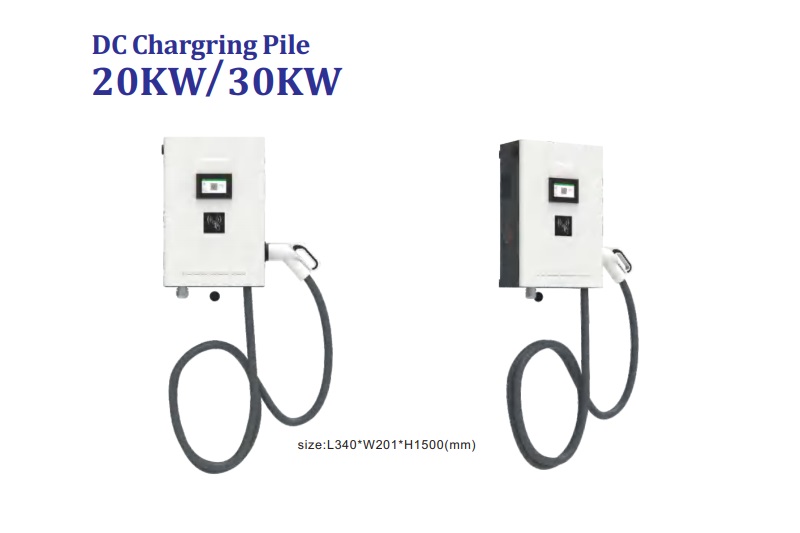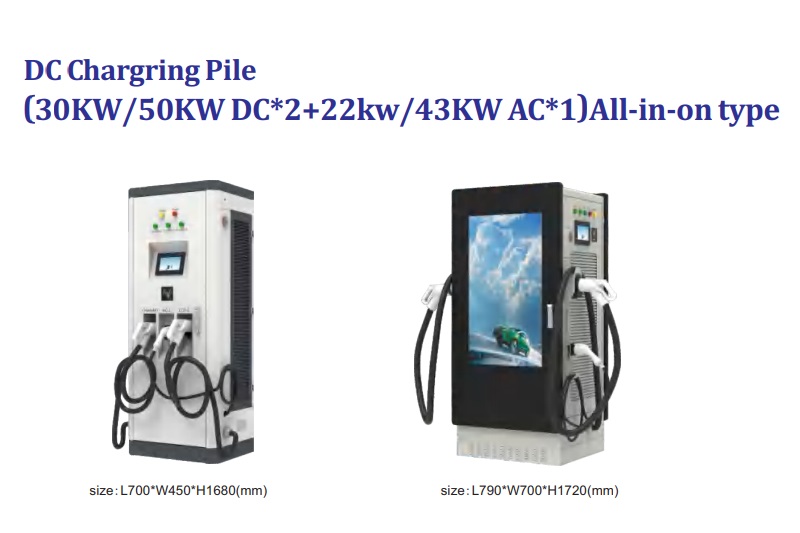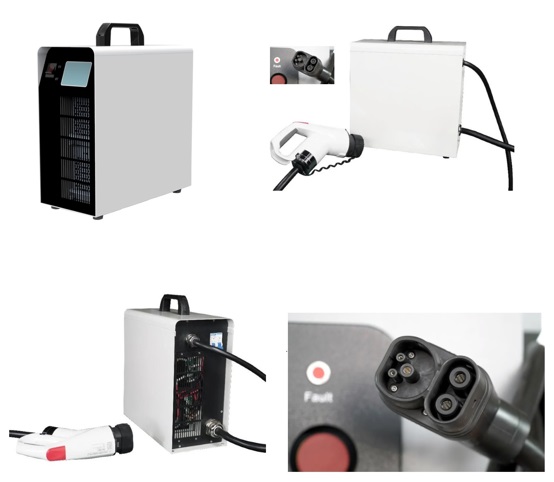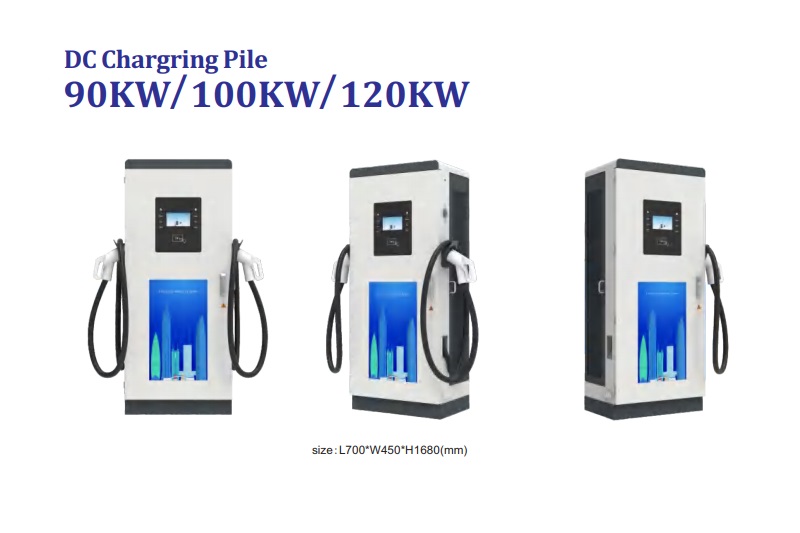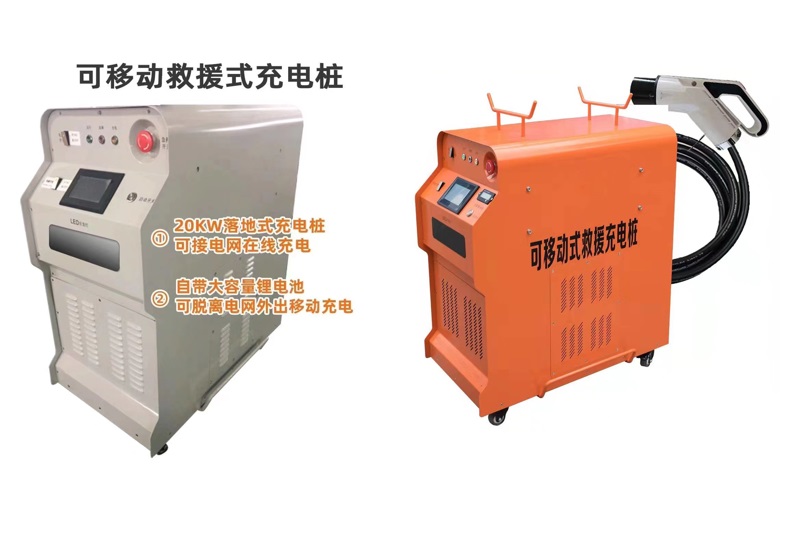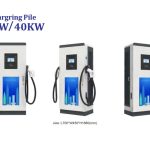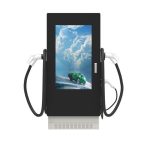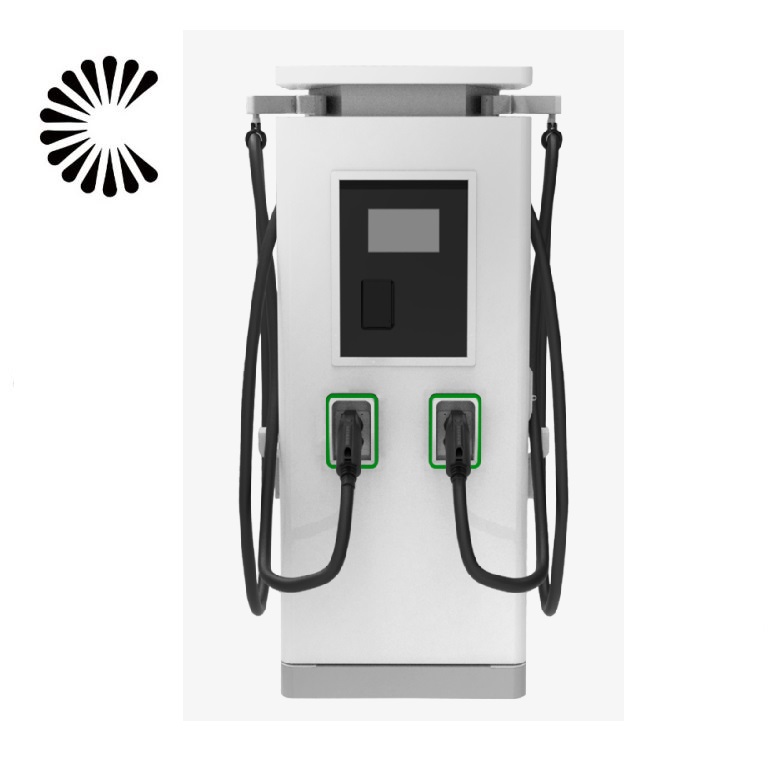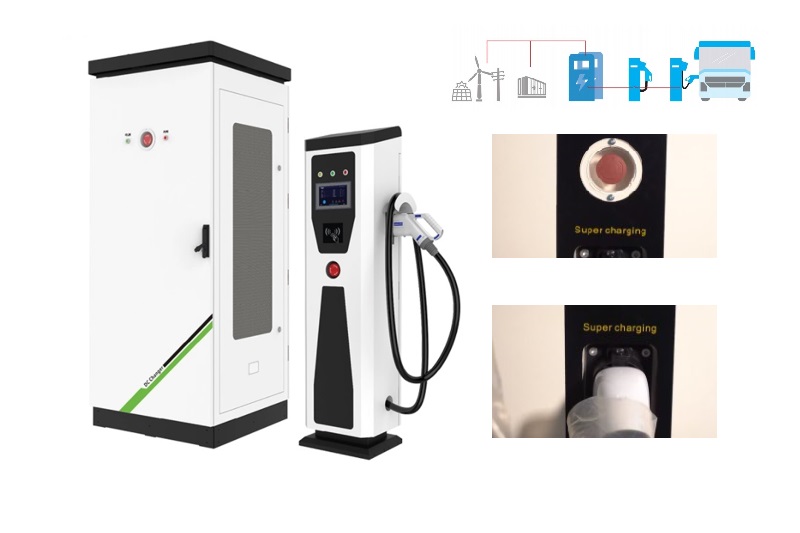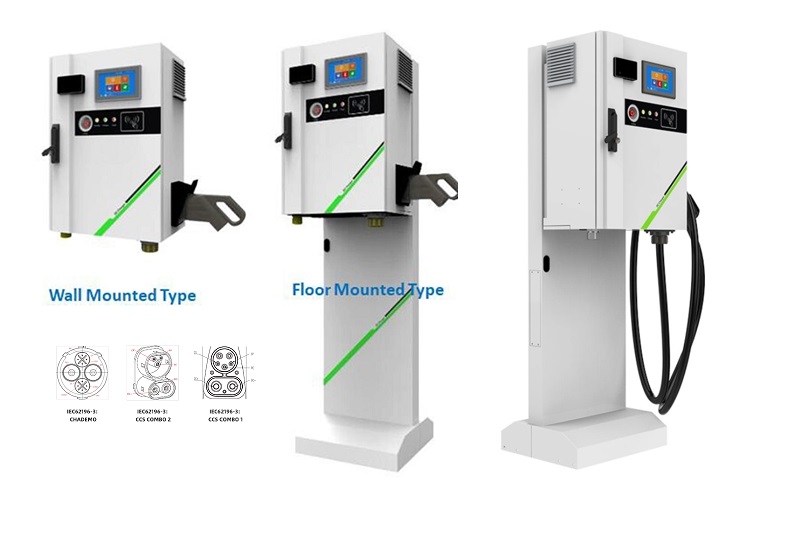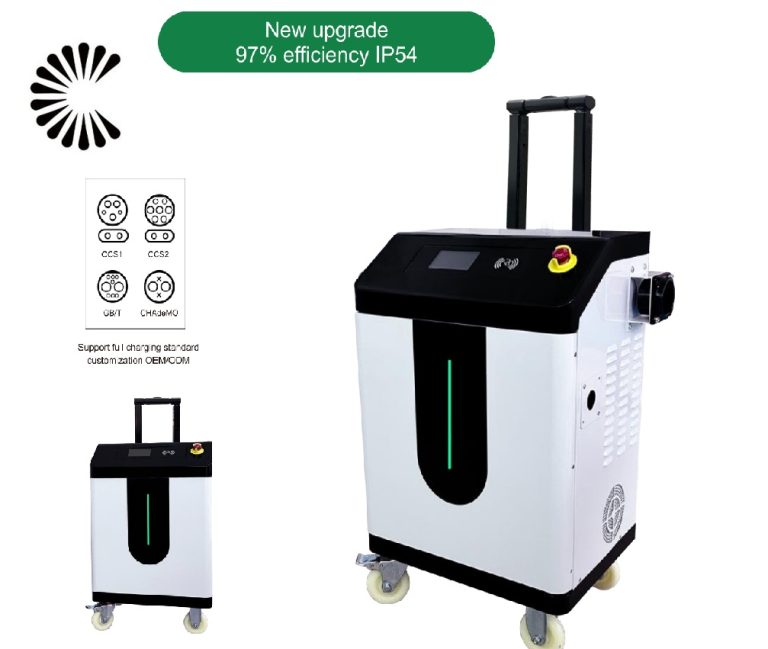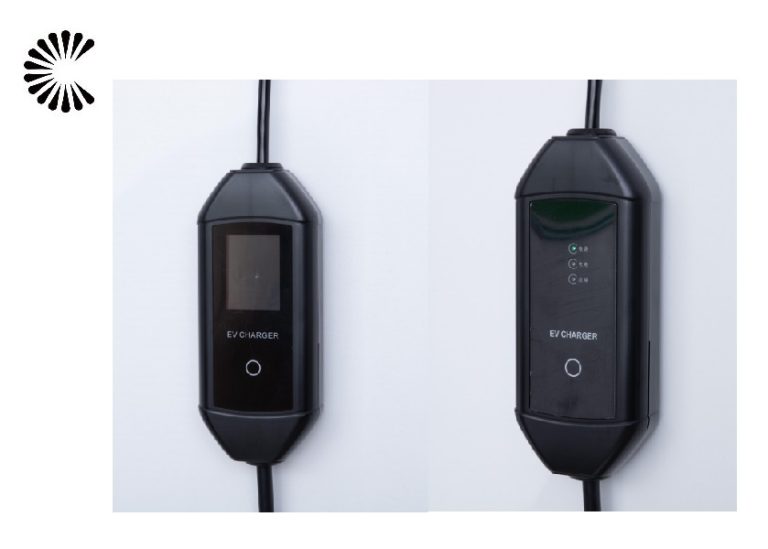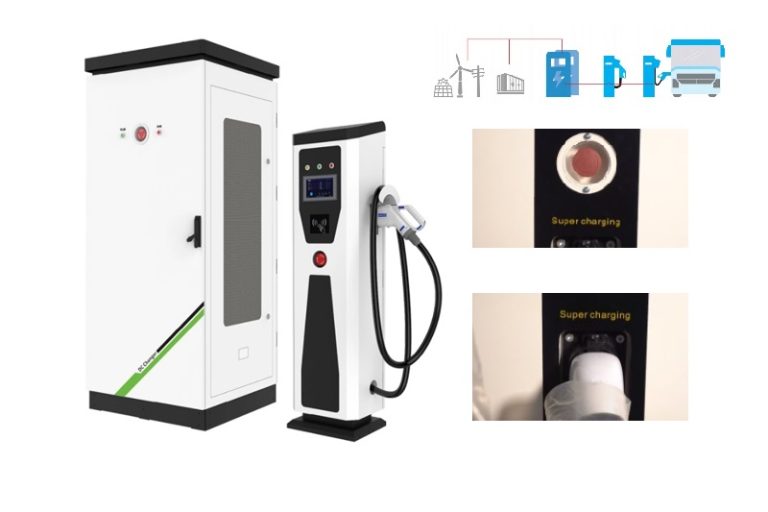380V EV Charger AC Floor OCPP 1.6J CCS+CHAdeMO+Type 2
380V EV Charger AC Floor OCPP 1.6J CCS+CHAdeMO+Type 2 is a model which is optional for 7kw, 11kw and 22 kw. The in out voltage are for 220V, 240V, 380V AC.

7kw ev charger Type 1 &2 Floor-mounted 220V~380V
Parameters & Configurations:
Dimensions:
Size: 293*140*418mm 359*140*510mm 324*136*1430mm
General Requirements
| EV Charger Type | AC | AC | AC |
| Charger Capacity | 7KW | 11KW | 22KW |
| Product Model NO. | HK- ENC-ACL007A HK- ANSI-ACL007A | HK- ENC-ACL007A HK- ANSI-ACL007A | HK- ENC-ACL007A HK- ANSI-ACL007A |
| Mounting | Ground-Mounted | Ground-Mounted | Ground-Mounted |
Input Requirements
| Ground-Mounted | Ground-Mounted | Single-Phase, 3 Wire AC system(ANSI) Three-Phase, 5 Wire AC system(ENC) | Single-Phase, 3 Wire AC system(ANSI) Three-Phase, 5 Wire AC system(ENC) |
| Nominal Input Voltage | AC220V±15%(ENC) AC240V±15%(ANSI) | AC380V±15%(ENC) AC240V±15%(ANSI) | AC380V±15%(ENC) AC240V±15%(ANSI) |
| Input Frequency | 50±3Hz | 50±3Hz | 50±3Hz |
Environmental Requirements
| Ambient Temperature Range | -25 to 55°C |
| Ambient Humidity | 5 to 95% |
| Storage Temperature | -40 to 70°C |
Mechanical Requirements
| IP Ratings | IP 54 | IP 54 | IP 54 |
| Cooling | Natural Cooling | Air-cooled | Air-cooled |
Output Requirements
| 3 Number of Outputs | 1 | 1 | 1 or 2(ENC); 2(ANSI) |
| Type of Each Output | AC220V±15%(ENC) AC240V±15%(ANSI) | AC380V±15%(ENC) AC240V±15%(ANSI) | AC380V±15%(ENC) AC240V±15%(ANSI) |
| Single Output Max. Current | 32 Amp | 16 Amp/50 Amp | 32 Amp/16 Amp(ENC) 50 Amp(ANSI) |
User Interface & Display Requirements
| Display & Touch-Screen Size | 4.3 Inches Touch Screen |
| User Authentication | Mobile Application or User Interface / QR Code/RFID Card /Password Login |
| Metering Information | Consumption Units |
Communication Requirements
| Communication between EVSE and Central Server | OCPP 1.6J Protocol (Optional) |
| Interface between Charger and CMS | Ethernet/3G/4G/WIFI (Optional) |
Protection & Safety Requirements
| Executive Standard | IEC 62196 2017, IEC 61851 2017, SAE J1772, etc |
| Safety Parameters | Over Current, Under Voltage, Residual Current, Surge Protection, Leakage Protection, Short Circuit, Over Temperature, etc. |
- The outlook is beautiful, operation is quite simpple easy to learn, installtion is easy to operate and can finish by customer with our on-line lessons;
- The Ev charger quality is reliable and high efficiency, perofrmance is quite stable;
- Easy understand interaction interface, there are optional for 4.3 or 7 inch color touch screen;
- It can support multiple modes of charging, also available for multiple operation management and payment;
- Accessible to ethernet or wireless telecommunication;
- Able to support the RFID Card/OCPP 1.6J;
- Able to support Type-2 Connector or optional to use Socket;
- Protection system: Have euipped with Overload integrated Protection System; The output device prevents the battery pack from charging the output filter capacitor of the charger, and prevents the instantaneous high current from occurring at the output end of the charger when the battery pack is connected.
- EV Charger meet the country standards and CE, ROHS.
- Able to upgrate the online data;
- Have function of Electrical isolation between input and output of charger.
They are suitable for occasions such as private villas, residential areas, commercial ofice
buildings,urban complex parking lots or urban public charging stations that can charge
slowly for a long time; or applied for 4S stores of new energy vehicles, workshop debugging areas, road rescue of new energy vehicles and other occasions that require frequent change of charging station sites or temporary power supply.It is suitable for all kinds of parking lots in urban public charging stations (private cars, commuters, buses), urban residential districts, shopping plazas, power business places, etc. of city special charging stations (buses, taxis, public service vehicles, sanitation vehicles, logistics vehicles, etc.) It is especially suitable for fast charging situations such as charging stations on intercity expressways where DC is needed, especially in the case of limited sites.
Here we list down some of application scenarios:
1. Business organizations: Supermarket, Shopping mall, Hotel, Restaurant, Pharmacy
2.Non-profit organizations: Airport, Railway / bus station, Exhibition, Museum, Hospital, School, Convention center, Lottery station, Government affairs center
3.Financial organizations: Bank, Insurance company, Foundation, Security company
4.Entertainments: Movie theater, Club, Bar, Salon, Gambling house
In the course of transportation, the charger should be packed firmly and intact in
a solid wooden packing box, and the direction of loading and unloading should be marked.
The charger should not be stored and transported upside down. In the course of
transportation, corresponding tightening measures should be taken to avoid strong
vibration and bump damage to the outer packaging of equipment. After arrival of the
goods, user should check whether there is any damage. If there is any transport damage,
user should consult with the transport party or our company to solve it. Check whether
the contents in the box are in conformity with the packing list immediately after
opening the box.
The packaged equipment should be stored in the room where the relative humidity is
less than 80% and the ambient air temperature is -20℃ to +55℃. Storage places should
be dry, clean and airy, and can prevent the invasion of harmful gases. It is strictly
forbidden to store corrosive articles in the same place.
Note: It is strictly forbidden for non-professionals to disassemble equipment
components.

Our Factory have certifications such as CE ISO Certifications. TUV /UL /CE Certificated for Overseas on cable and wire.
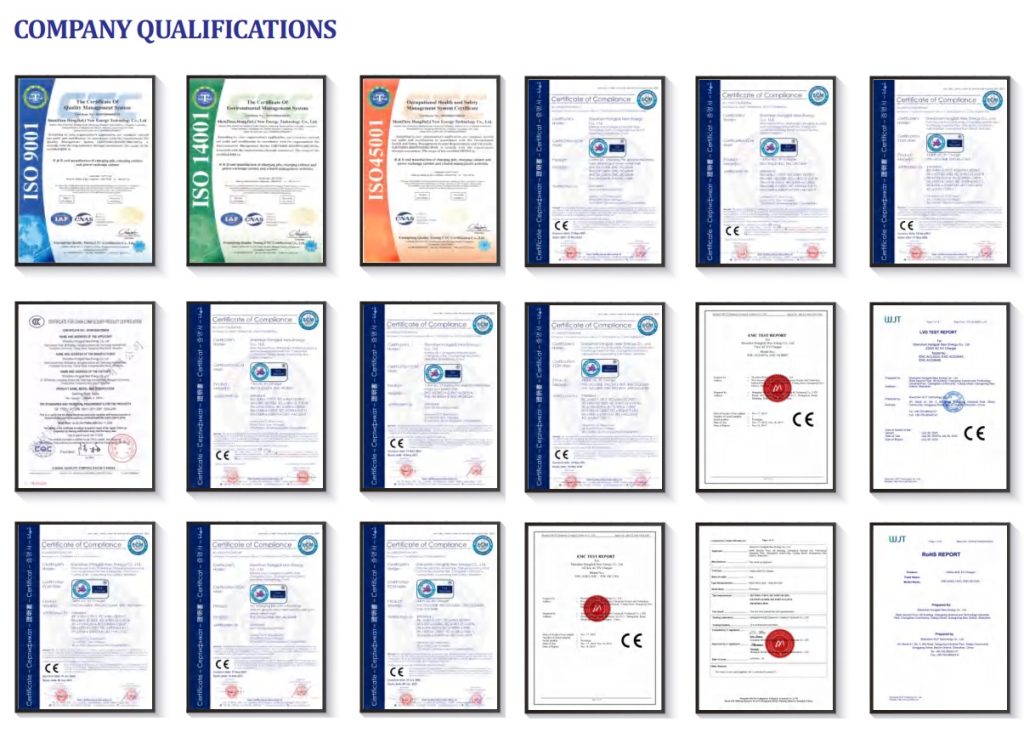
- Charger body is easy to be fixed with anchor bolts to prevent it from inclining
and dithering due to external and human factors. - Shading and rainproof measures should be taken for chargers. It is suggested
to install shelters outdoors. - Check regularly whether all bolts in chargers are tightened, whether the connecting wires are loosened or not, or the connection is not firm, etc.
- Check for short circuit.
- Check whether the emergency stop button is available.
- Attention should be paid to lightning protection to ensure effective shielding
and reliable grounding of chargers. - When in use, the output voltage and current of the charger should be controlled within the nominal range to ensure that the charger works in the state of maximum efficiency.
- When the charger stops using, the charging output should be stopped first, then the cable should be wrapped and put back in place.
Note: During the transportation, the chargers should be packed firmly and the
direction of loading and unloading should be marked. It is forbidden to store and
transport chargers upside down. Corresponding tightening measures should be taken
to avoid strong vibration and turbulence damage to the outer packaging of equipment.
- Decades of Experiences: As a Chinese academy of sciences park high-tech enterprise and manufactory, our factory establised since 2002, with over 10 years factory development, our factory became famous brand in China. We believe new energy is the future, better to environment and more economical to our life. We are an integrated hi -tech electronic company. “Passion, Honesty, Sound service, Keen cooperation and Development” are our goals. We are here expecting friends all over the world!
- Various Charging Products: Full range of charging products as well as charger accessories. Provide full support to customer after-sale services. Most of the model of produts are able to be customized.
- For all the products that we shipped have 1 year warranty period as well as life time spare parts and accessories with competitive price .
- Accept customized OEM ODM products.
- Experienced foreign trade team to handle the shipment and after-sale services.
- Efficient and fast supply chain.
Our factory With the professional R&D and Sales & Service Team. This enable us not only can provide the products but also a complete solution for EV Charing Station. Besides, OEM&ODM or engineering application assistance are also provide to our customer. Over decades of experience in electric power industry, our facotry also received high praise from international renowned enterprises for the great products and service.
| Certificate: | CE RoHS FCC Certificate | Warranty: | 12 Months |
| Input Voltage: | 110V-380V | Output Voltage: | 0-750V |
| Working Temperature: | -25℃-55℃ | Application: | Home Use/Commercial Use |
| OEM Service: | Color,Logo,Package, cable length, cable color | Supply Ability : | 4000 Piece/Pieces per Week |
| Packaging & Delivery: | Shanghai Port | Capacity | 4000 Piece/Pieces per Week |
| Lead Time: | Quantity(units) 1 – 5 5 working days | Factory Type | Supplier |
| Country / Region | China/Gungdong | Main Products | EV Charging Station, EV Charging Cable, EV Charging Connector |
| Factory employees | Over 100 people | Total Annual Revenue | Above US$100 Million |
| Main Markets | Europe South America | Connection: | type 1 or 2 plug |
| Mass production price | Negotiable | Charger Capacity | 3.5kw~480kw |
| Current | DC/AC | Plug type | Type 1,2,CHAdemo/CCS-2/CCS-1 |
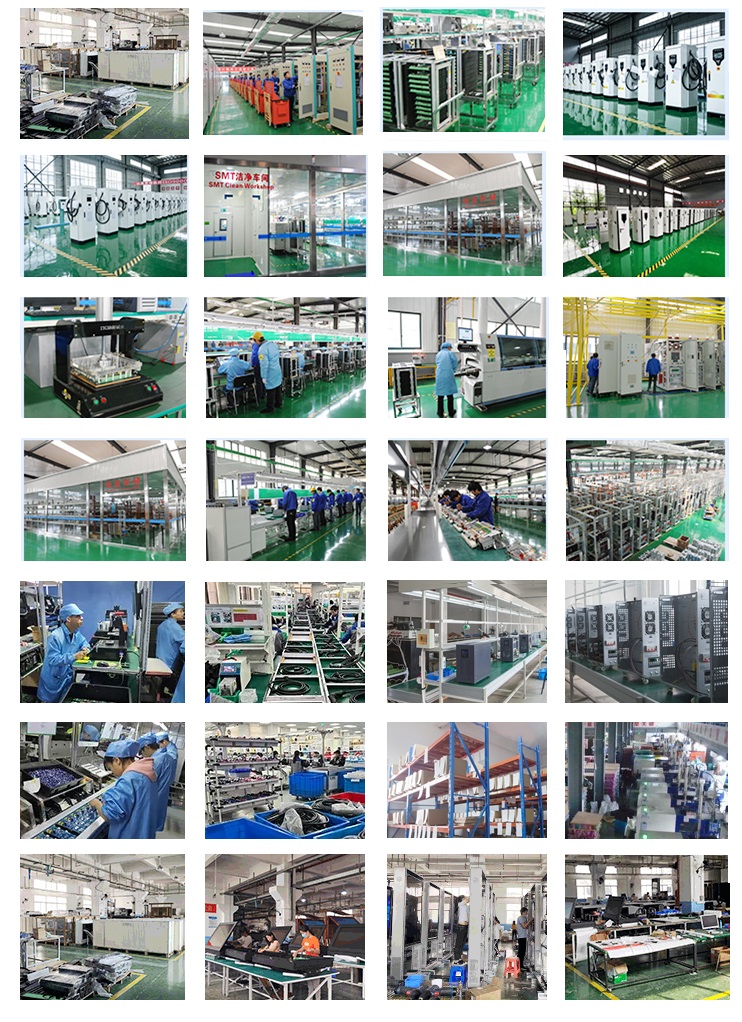
Input & Output Voltage 220V EV Charger:
Best 240V EV Charger for sale:
best 16a level 1/2 ev charger:
Here are our 4 favorite 16 Amp EV Chargers that can be plugged into a 16 Amp circuit and will deliver enough power to charge most vehicles overnight.
Two Types of Portable EV Charger:
There are two types of Portable EV Charger: with battery or with out battery. The difference between this two types is there are battery for storage the electricity or not. With battery EV Charger are used in emergency rescue, because with battery, the weight of the charger is higher than another type. Usually need to carry it with car. While without battery EV charger need to connect with electricity when in charging.

Level 1 EV Charger
Portable EV Charger Type 2
Mobile EV charger for roadside use
Portable EV charger solar
Portable EV charger solar is avialble with solar energy.

